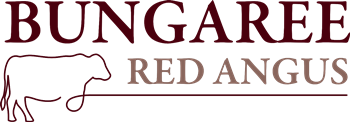
Sustainability. Adaptability. Profitability. Optimal production.
Goal: easy-fleshing, moderate-sized, low-maintenance, GRASS-BASED genetics.
During the late 1950s and early 1960s the farm Hillside, under Len Howell’s management, became one of the best known veld conservation farms in South Africa. With help from well-known conservationist and author, John Acocks (who wrote the classic reference book ‘Grasses and Pastures of South Africa’), Len developed the well documented non-selective grazing methodology (NSG) and then moved on to short duration grazing (SDG). His passion allowed the maximum development of climax grass types, and the optimisation of ground cover, holistic farm management and sustainable ecology.
In 1974, on a trip abroad, Len Howell saw and fell in love with Red Angus cattle in the Clare district of South Australia. He imported 7 pregnant cows and one bull. The small herd travelled to South Africa by ship. They arrived in the Cape Town quarantine station and Elias Thuhlo was sent down from the farm to take care of the cattle. He travelled back from Cape Town with them by train and stayed in the cattle truck with his charges, feeding and watering them at stops along the way. Those animals and their offspring formed the nucleus of the herd that Des and Wyn Irwin took over and registered with SA Stud Book as Bungaree Red Angus in 1986. Des was passionate about his cattle and had very definite opinions about them being raised on veld only. His view was based on a ‘survival of the fittest’ philosophy, and the desire to breed and provide the cattle industry with seed stock that would excel in all conditions. He believed that cattle should not be fed maize, primarily because herbivores were created by the Lord to eat grass and are among the few creatures able to convert cellulose (or grass/veld) into protein.
The Bungaree Red Angus herd has been managed on a “no feeding” policy with only salt and phosphate licks as supplements. It was on this strict, low input regime that the herd was established, and has received numerous awards over the years for low inter-calving periods. Our philosophy rests on the fact that the animals that are top performers on grass have a different genetic makeup to those where grain feed is required for them to excel.
Vision/Goal
Now the farm is in the hands of the fourth and fifth generations: Ian McLachlan, his wife Kate and their three sons Joshua, Luke and James. Day-to-day operations are willingly and ably managed by Theunis Kruger and the members of our staff.
Our aim continues to be to supply efficient, easy-fleshing moderate-sized, low-maintenance, GRASS-BASED genetics. That said, we have moved away from the rigid policy that the cattle will never be fed grain. Optimal production is based on a balance between energy and protein. In essence, profitability is a key component of any farming enterprise, and should grain be the cheapest energy means to help the cattle through an extreme situation it will be used.
We support the notion that “man must measure” and believe that this is a key factor in making genetic progress and providing animals that are well adapted to their environment. Only cows that produce a calf unassisted each year remain in the herd. We aim for each cow to wean a calf at around 50% of her (the dam’s) body mass. The weaned calves are put through performance testing in veld conditions. Profit is expressed as kg/hectare, – not per animal – and is the measure that defines the progress made.
While the notion that “bigger is better” has largely motivated the selection of cattle being imported into South Africa, we have consciously sourced genetics from breeders who have similar goals to ours; where profit per hectare is the driving force of animal selection. Cows must be bred to suit the tough circumstances that our country experiences. This focus has enabled us to become confident that we really do have genetics that is different.
This policy is consistent with increasing public awareness of, and demand for healthy food. Grass-fed animals have lower omega 6 fats than animals fed on grain, and discerning customers seek meat that is not hormone treated. Due to the consistent and enduring strict selection process, we adhere to, we are confident that the genetics of those cattle maintained within our nucleus herd will become ever more relevant to the commercial cattle farmer who wants to optimise production from the veld with low inputs.

